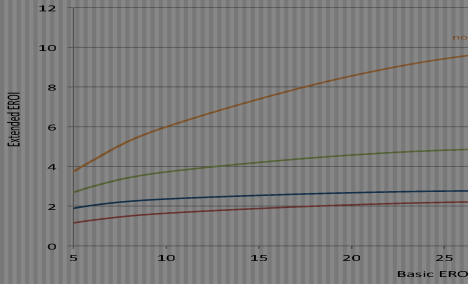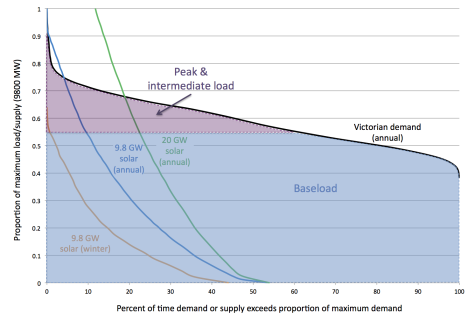Guest Post by Graham Palmer. Graham is an industrial engineer and energy commenter from Melbourne. For another BNC post featuring his work, see Does energy efficiency reduce emissions and peak demand?
 Click the above image to download the PDF (full version is free – Open Access)
Click the above image to download the PDF (full version is free – Open Access)
With declining system costs and assuming a short energy payback period, photovoltaics (PV) should, at face value, be able to make a meaningful contribution to reducing the emission intensity of Australia’s electricity system. But will it? Graham Palmer takes a critical look at this key question. The original peer-reviewed paper is:
Palmer, G. (2013) Household Solar Photovoltaics: Supplier of Marginal Abatement, or Primary Source of Low-Emission Power? Sustainability 5(4), 1406-1442; doi: 10.3390/su5041406
The energy return on investment (EROI) of solar PV has been the subject of many studies over decades, with some recent studies suggesting an energy payback of less than 2 years. However conventional PV-LCA’s usually focus on ingot/wafer/cell/module/BOS, with the LCA boundary ending at the inverter output.
Further, some researchers argue that upstream energy impacts that are beyond the standard PV-LCA boundaries can make up half of the energy impacts.
My paper builds on a recent study by Prieto and Hall titled “Spain’s Photovoltaic Revolution: The Energy Return on Investment”.
Hall is arguably the world’s leading expert on the concept of EROI and Prieto was a chief engineer for several major photovoltaic projects in Spain. Based on real-world experience in Spain’s large PV expansion before the GFC, they conclude that the EROI of PV is far lower than commonly assumed, and may be too low to support an energy and economic transition away from fossil fuels. Given Spain’s excellent solar insolation, this is a serious concern.
Taking a similar approach, I examine the role of high-penetration household PV within the Australian NEM, with a focus on Melbourne. I also include an analysis of intermittency, grid integration and the energy costs of storage. Once these downstream energy costs are included, and assuming that PV has an integral role in the electricity system, the EROI drops below the minimum threshold generally considered necessary to transition from fossil fuels.
I conclude that in a grid dominated by unsequestered coal and gas, and treating PV as a non-essential add-on to an electricity meter, PV provides a legitimate source of emission abatement with high, but declining costs. But at high grid penetration, the economic and energy costs of accommodating PV erodes much of the benefits.
PV’s greatest strength lies in being embedded within the low voltage distribution network as a supplementary power source, where it can potentially provide valuable network support, but will require electricity market reform along with a substantial decline in lifetime battery costs. The conclusion is that the short-run tactical response of the expansion of PV without storage works against a long-run strategic approach to deep emission cuts, which will ultimately require the successful adoption of one or more of the candidate low-emission baseload technologies.
———-
Got a Comment?
To leave your comment and read other reactions, please go to the dedicated Discussion Thread on the BNC Forums:
http://bravenewclimate.proboards.com/index.cgi?action=display&board=bncblogposts&thread=389
Filed under: Emissions, Renewables






.png)








All comments should be posted here:
http://bravenewclimate.proboards.com/index.cgi?action=display&board=bncblogposts&thread=389